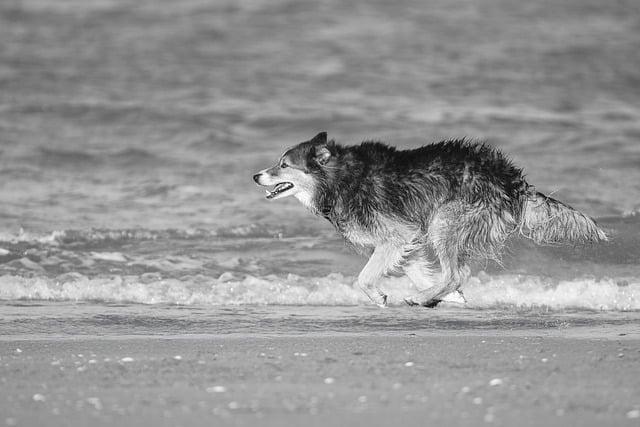Imagine coming home after a long day, only to find your dog staring at you with those big, soulful eyes, tail wagging in anticipation. You might wonder, “Do I need to entertain my dog all day?” The answer is no, but engaging them is crucial. Dogs thrive on mental stimulation and social interaction, not constant entertainment. A few interactive toys, short training sessions, and regular walks can keep them happy and healthy. Remember, quality time matters more than quantity. Your dog will appreciate the effort, and you’ll both enjoy a stronger bond.
Contents
- Understanding Your Dogs Needs for Mental and Physical Stimulation
- The Consequences of Insufficient Engagement on Your Dogs Well-Being
- Effective Strategies for Balancing Playtime and Independence
- Creating a Structured Routine to Enhance Your Dogs Happiness and Health
- Q&A
Understanding Your Dogs Needs for Mental and Physical Stimulation
Dogs, like humans, thrive on a balance of mental and physical activities. Engaging your furry friend in stimulating activities is essential for their overall well-being. Without adequate stimulation, dogs can become bored, leading to destructive behaviors and anxiety. Understanding what your dog needs in terms of both mental and physical engagement is crucial for a happy and healthy pet.
Physical stimulation is often the most visible form of engagement. Regular exercise not only helps maintain your dog’s physical health but also contributes to their mental clarity. Consider incorporating a variety of activities into their routine, such as:
- Daily walks: A simple yet effective way to explore the environment and burn off energy.
- Playtime: Interactive games like fetch or tug-of-war can be both fun and physically demanding.
- Agility training: Setting up an obstacle course can challenge your dog physically and mentally.
On the other hand, mental stimulation is equally important. Dogs are intelligent creatures that require challenges to keep their minds sharp. Engaging their brains can prevent boredom and promote a sense of accomplishment. Here are some effective ways to provide mental stimulation:
- Puzzle toys: These toys require dogs to solve problems to access treats, keeping them engaged for extended periods.
- Training sessions: Teaching new commands or tricks not only reinforces good behavior but also stimulates their minds.
- Interactive games: Games that involve scent work or hide-and-seek can be incredibly rewarding for dogs.
Ultimately, the key to a fulfilled dog lies in variety and balance. While you don’t need to entertain your dog every moment of the day, incorporating a mix of physical and mental activities into their routine will ensure they remain happy and well-adjusted. By understanding and catering to your dog’s needs, you can foster a deeper bond and create a more harmonious living environment for both of you.
The Consequences of Insufficient Engagement on Your Dogs Well-Being
When dogs do not receive adequate engagement, the effects can be profound and far-reaching. **Boredom** is one of the most immediate consequences, leading to a range of undesirable behaviors. Dogs may resort to chewing furniture, digging holes in the yard, or barking excessively as they seek ways to entertain themselves. These actions are not just nuisances; they can also result in damage to your home and create tension in your relationship with your pet.
Moreover, insufficient mental and physical stimulation can contribute to **anxiety and stress** in dogs. Just like humans, dogs thrive on routine and interaction. A lack of engagement can leave them feeling isolated and uncertain, which may manifest in signs of distress such as pacing, whining, or even aggression. This emotional turmoil can be detrimental to their overall health, leading to a cycle of behavioral issues that can be challenging to break.
Physical health is also at stake when dogs are not adequately engaged. Without regular exercise and mental challenges, dogs can become **overweight and lethargic**. This not only affects their energy levels but can also lead to serious health problems such as joint issues, diabetes, and heart disease. Engaging your dog in daily activities helps maintain a healthy weight and promotes a longer, happier life.
Lastly, the bond between you and your dog can suffer due to a lack of engagement. Dogs are social animals that thrive on interaction with their owners. When they feel neglected, they may become less responsive to training and less affectionate. Investing time in engaging your dog fosters a deeper connection, enhancing trust and loyalty. This relationship is crucial for both your well-being and that of your furry friend, making it essential to prioritize their engagement needs.
Effective Strategies for Balancing Playtime and Independence
Finding the right balance between engaging your dog in play and allowing them to enjoy their independence is crucial for their overall well-being. Dogs, like humans, thrive on a mix of social interaction and personal space. By implementing effective strategies, you can ensure that your furry friend remains happy and healthy without feeling overwhelmed by constant entertainment.
One effective approach is to establish a routine that incorporates both playtime and quiet time. This can be achieved by setting specific times during the day for interactive play, such as fetch or tug-of-war, followed by periods where your dog can relax and explore their environment independently. **Consistency** is key; dogs are creatures of habit and will quickly learn to anticipate these moments, making them feel secure and content.
Incorporating **enrichment activities** into your dog’s daily life can also promote independence while keeping them mentally stimulated. Consider providing puzzle toys, treat-dispensing balls, or even hiding treats around the house for your dog to find. These activities encourage problem-solving and self-directed play, allowing your dog to engage their mind without requiring your constant involvement.
Lastly, it’s essential to recognize your dog’s individual personality and energy levels. Some dogs may require more playtime than others, while some may prefer solitude. **Observing your dog’s behavior** will help you tailor your approach to their specific needs. By respecting their preferences and providing a balanced mix of interaction and independence, you can foster a happy and well-adjusted companion who feels fulfilled both in your company and on their own.
Creating a Structured Routine to Enhance Your Dogs Happiness and Health
Establishing a structured routine for your dog is essential for their overall happiness and health. Dogs thrive on predictability, and a well-organized schedule can help reduce anxiety and behavioral issues. By incorporating regular activities into their day, you can ensure that your furry friend feels secure and content. A routine provides a sense of purpose, making your dog feel more engaged and less likely to exhibit destructive behaviors due to boredom.
To create an effective routine, consider including a variety of activities that cater to your dog’s physical and mental needs. **Daily walks** are crucial for exercise and socialization, while **playtime** with toys or other dogs can stimulate their minds. Additionally, incorporating **training sessions** into your schedule not only reinforces good behavior but also strengthens the bond between you and your pet. By mixing these activities, you can keep your dog mentally sharp and physically fit.
Another important aspect of a structured routine is **mealtime consistency**. Feeding your dog at the same times each day helps regulate their digestion and can prevent overeating. It also creates a sense of stability in their life. Consider using puzzle feeders or slow-feed bowls to make mealtime more engaging, turning it into a fun activity rather than just a routine chore. This approach not only enhances their eating experience but also encourages problem-solving skills.
Lastly, don’t forget the importance of **downtime** in your dog’s routine. Just as humans need time to relax and recharge, dogs benefit from periods of rest. Designate quiet times during the day where your dog can unwind, whether it’s lounging in their favorite spot or enjoying a cozy nap. Balancing active play with restful moments will help your dog maintain a healthy energy level and contribute to their overall well-being, ensuring they are both happy and healthy.
Q&A
-
Do I need to entertain my dog all day?
No, you don’t need to entertain your dog all day. Dogs are naturally capable of entertaining themselves and can enjoy periods of downtime. Providing a balanced routine of play, exercise, and rest is essential for their well-being.
-
What activities should I include in my dog’s routine?
Incorporate a mix of activities such as:
- Daily walks
- Interactive playtime
- Training sessions
- Puzzle toys
This variety keeps your dog mentally and physically stimulated without overwhelming them.
-
How much exercise does my dog need?
The amount of exercise varies by breed, age, and health. Generally, most dogs require at least 30 minutes to 2 hours of exercise daily. Consult your veterinarian for personalized recommendations based on your dog’s specific needs.
-
What if my dog seems bored?
If your dog appears bored, consider introducing new toys, changing your walking route, or engaging in different activities. Dogs thrive on variety, and small changes can significantly enhance their daily experience.
while your dog thrives on interaction and stimulation, it’s essential to strike a balance. Engaging activities are vital, but so is allowing your pet time to relax. A well-rounded routine fosters a happy, healthy dog—one that’s content both in play and peace.

大家好,我是彼得潘,專業的手法身體治療師。我喜歡探索和研究各種主題,並透過與人工智慧的合作分享專業、實用、有趣的文章。我們定期進行人工審核,以確保內容的準確性。如果您發現文章中有任何不準確的地方,請隨時與我們聯繫,我們會及時糾正。您可以透過 [email protected] 與我們聯繫。



